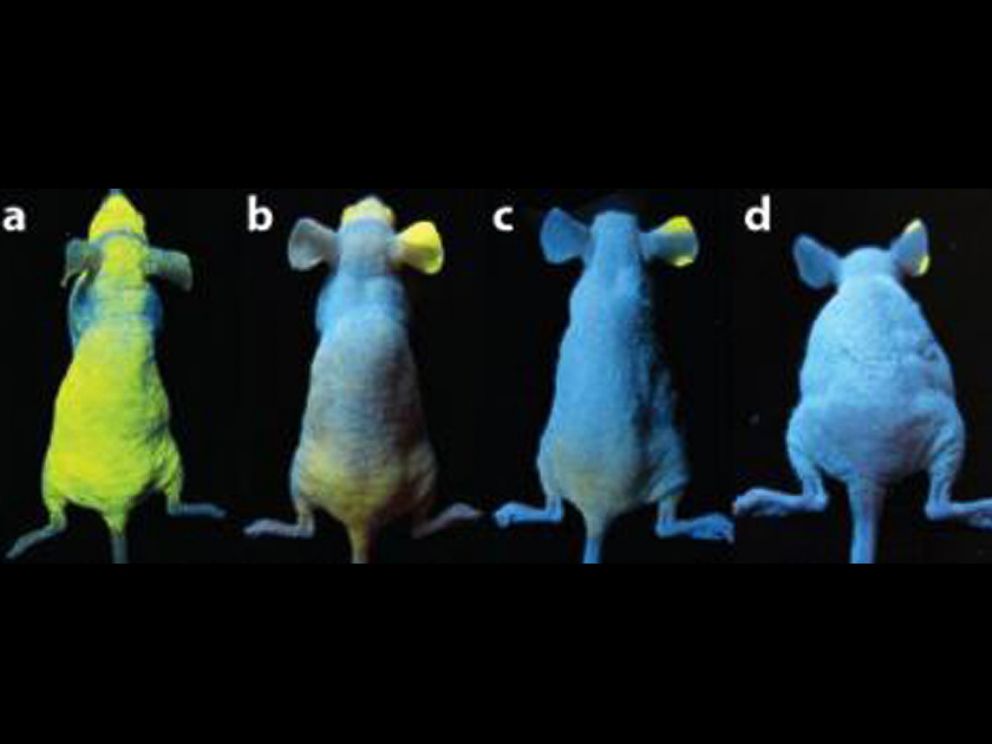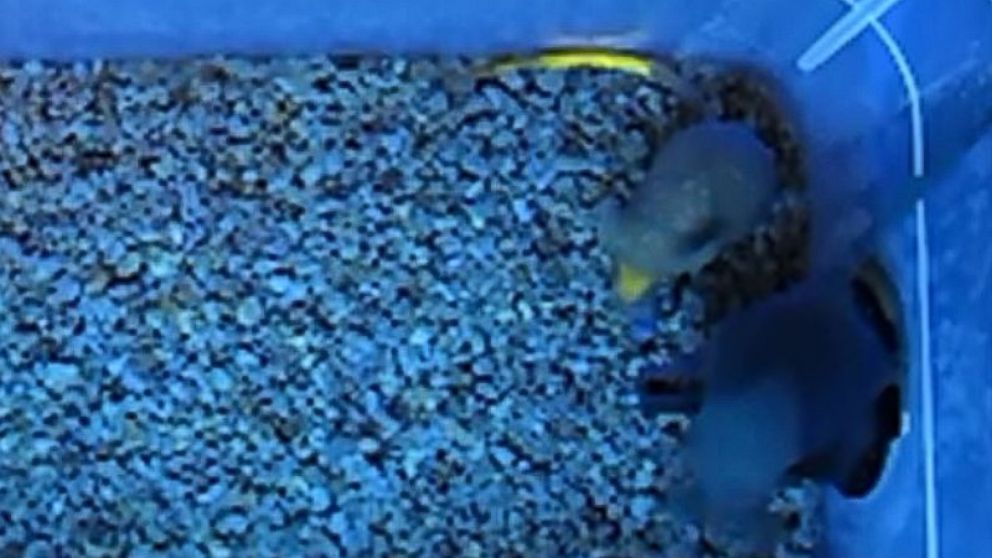Glowing Nanoparticles Make Mice Light Up
A bright experiment reveals why tiny particles could mean big trouble.
May 14, 2014— -- Check out the shimmering constellations of spots on these mice.
Canadian scientists injected the rodents with quantum dots -- light-sensitive nanoparticles that are 8,000 times smaller in width than a human hair.

The dots glow when exposed to UV light, allowing the scientists to measure their accumulation under the skin, which incidentally correlates with their accumulation in other organs.
Nanoparticles are now found in a variety of products including clothing, cosmetics, medicine, windows, car tires and even food. And experts say they may pose a health risk.
“Many nanoparticles are metals,” said Warren Chan, a researcher from the University of Toronto and lead author of the glowing mouse study published in the journal Nature. “When they degrade in the body, they can cause toxicity.”
Their highly diffusive character could lead to a faster buildup of chemicals in the organs or create blockages that cause larger particles to accumulate in the tissue, Chan said. And researchers from the Harvard School of Public Health's Center for Nanotechnology and Nanotoxicology recently demonstrated that the nanoparticle state of some metals can damage DNA.

The new mouse study should help predict how the tiny particles behave in the body, Chan said.
“We’re trying to determine their size, shape and chemistry so we can identify how much you’ve been exposed and what you’ve been exposed to,” he said.




